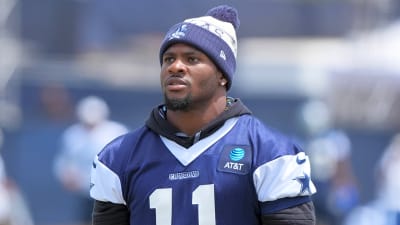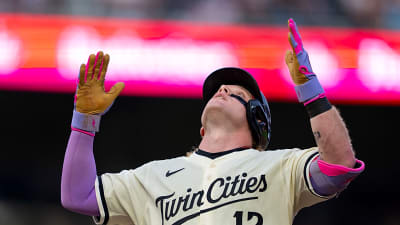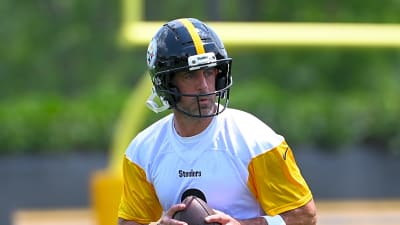
The Charlotte Hornets continue to put the finishing touches on their roster for the upcoming season. That includes filling up their two-way spots, which they did last week by signing Drew Peterson.
Alongside the two other players on two-way contracts, which are currently KJ Simpson and Antonio Reeves, Peterson will split time between the G-League and the main roster.
So it's only right to take a closer look at the former Boston Celtic, who could end up seeing some run in the latter stages of the season or maybe even sooner if injuries to the main guys occur.
Bio
Peterson grew up in Libertyville, Illinois, about a one-hour car drive north of Chicago, and hometown to one other NBA player in Steve Novak. He attended the local Libertyville High School and was named Lake County player of the year as a senior.
That set him up nicely for a successful college career. There were offers from Yale and Princeton, amongst others, but Peterson ultimately decided to spend his freshman and sophomore years at Rice, where he was teammates with current Pelicans forward Trey Murphy III.
After establishing himself as a starter in year two, Drew entered the transfer portal and ended up becoming a USC Trojan. Despite the step up in level of competition, he remained a starter, now suiting up alongside the Mobley twins and playing into the latter stages of the NCAA tournament.
Peterson's solid play did get him into second-round conversations before the 2023 draft, but he wouldn't end up hearing his name called on draft night. Instead, he spent a few weeks with the Miami Heat and their G-League affiliate before being brought in on a two-way contract by the Boston Celtics.
Following the 2023-24 season, where Drew appeared in only three NBA games, the Celtics decided to keep him around on another two-way. The 2024-25 campaign saw him suit up in regular-season games more often, 25 times to be exact. When he wasn't with the main roster, he continued showing out in the G-League, putting up 20 points per game.
Strengths
The biggest selling point on Peterson ever since his college days has been the positional versatility. Molded for the modern basketball landscape, Peterson stands at 6'9 but has many skills that enable him to play more like a connecting wing.
For starters, he has a reliable three-point shot. Since joining USC, Peterson has shot above 35% from deep in every single season, whether it be at the collegiate, G-League, or NBA level.
And it's not like he is a rare or especially selective shooter either, as last season with the Maine Celtics saw him attempt 8.5 threes per game on an impressive 37.4% clip.
Drew Peterson is 3 for 3 from three for the Maine Celtics in the G League ECF, he ties the game after a slow start for Maine pic.twitter.com/DRYGBEGHA7
— Danielle Hobeika (@DanielleHobeika) April 6, 2025
While Peterson's role in the NBA will be mostly limited to that of an off-ball shooter, he's also capable of taking on some basic ball-handling duties, consistently making the right reads and creating his own shot against slower opponents.
He did lots of that as a USC Trojan and also with the Maine Celtics. Understandably, that changed during his main roster minutes, but even then, he was able to fit some of his playmaking chops into the isolation-heavy offense of Joe Mazzulla.
That's because he has a good feel for the game. He's active off the ball, and his height allows him to see over smaller defenders when he's got the ball in his own hands. But you can't play taller/slower bigs against him either, because he can shake them loose and isn't afraid to look for his jumpshot.
Overall, the slight frame (205lbs) enables Peterson to not only have the skillset of a wing but move like one as well. He will rarely blow by defenders, but his mobility, especially in comparison to other players at his position, is noteworthy.
Weaknesses
With all that being said, there are some flaws to Peterson's game that have kept him from becoming a rotational NBA player up to this point in his career. It all starts with one of his biggest advantages.
While being relatively slim helps mobility-wise, it puts him at a disadvantage defensively against most players. Drew's frame isn't the biggest to begin with, but he has to put on some more weight to at the very least hold his own against the average wing.
Peterson is currently tied for being the second-tallest player on the roster, but he only ranks 13th in weight. He's probably never going to be a plus defender, as players of his archetype rarely are. But if he gets to a point where other teams don't target him on offense, that would be enough.
Looking at his scoring, there are two major concerns: Firstly, he hasn't taken as many corner threes as you'd like. Last season, only 10 of his 233 shot attempts in the G-League were corner threes. The year before that, 37 of his 440 shots came from that area of the court.
It's the spot he'll find himself in more often than not, and there's no reason to assume his otherwise good shooting won't carry over to those zones. But he simply hasn't taken enough in-game attempts from there up to this point.
Secondly, you simply lose physicality on offense with Peterson on the court. As mentioned previously, he makes up for his stature with his shooting and feel for the game. But you won't see him ever muscle his way to the cup or wipe opponents out with a screen, like players at his size might usually do.
Fit with the Hornets
Everybody who watched the Hornets last year knows that they took a lot of threes but didn't make a lot of them. Bringing in a proven shooter who can both create his own shot and play in the flow of an offense off the ball is a good idea.
Peterson is by no means an out-of-this-world elite marksman, but his overall offensive game just fits the Hornets well. The defensive end of the court is where it gets a bit iffy.
Unlike the Celtics, the Hornets don't have the roster or the scheme to hide too many subpar defenders. The center rotation, being somewhat in limbo, doesn't help either. It's not a situation where plugging in a skinny forward seems convenient.
So, will Peterson play a considerable role in the near future? No. But is he worth taking a flyer on? Yes.
If he refines his body some more and thereby improves on the defensive end, he's a versatile forward who can be plugged into all kinds of lineups. On the flipside, he wouldn't be the first player who was solid at many things, excelled at none, and ended up fading out of the league because of it.
- MORE STORIES FROM HORNETS ON SI -
Hornets to waive Damion Baugh to create room for Antonio Reeves
Jeff Peterson’s rebuild earning praise as Hornets aim to become a real NBA threat
More must-reads:
- Surprising update emerges about Jayson Tatum's recovery
- Report: Knicks made a signing based on Giannis Antetokounmpo trade belief
- The 'NBA Summer League MVPs' quiz
Breaking News
Trending News
Customize Your Newsletter
 +
+
Get the latest news and rumors, customized to your favorite sports and teams. Emailed daily. Always free!








